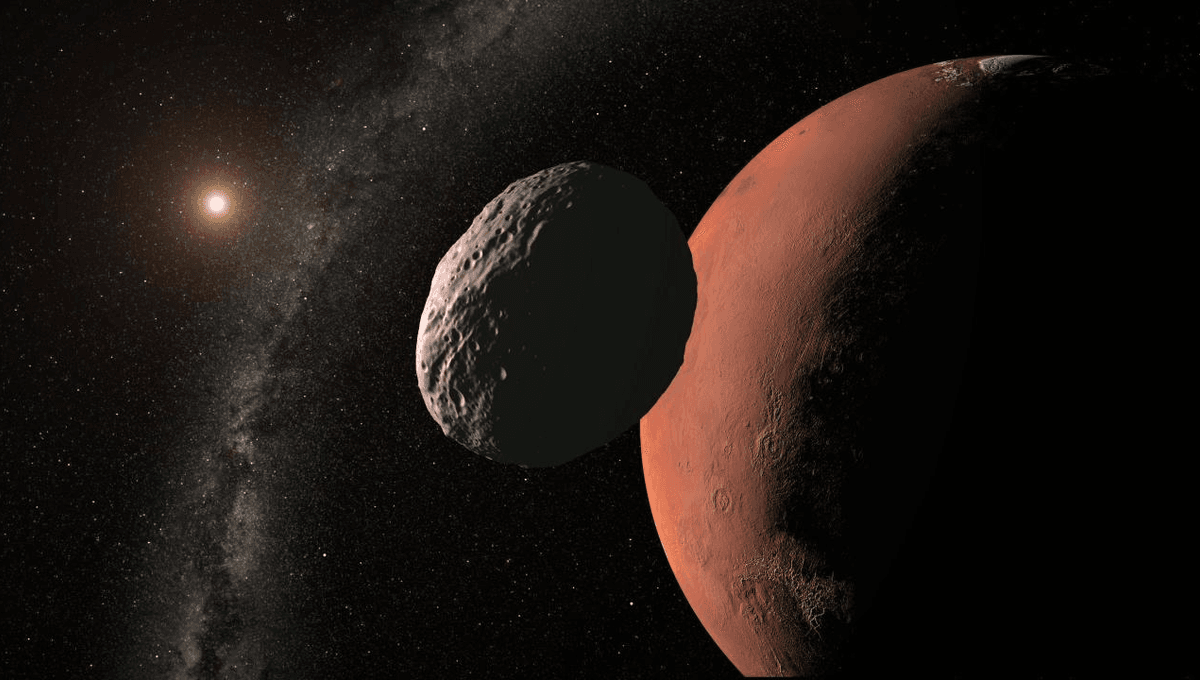
Astronomers have confirmed the existence of a new trojan asteroid in the orbit of Mars. This new companion of the Red Planet precedes Mars in its orbit, but unlike other trojan asteroids, this one might be in an unstable orbit, which suggests intriguing possibilities about its past.
Trojan asteroids are located in the same orbit as a planet and move together with it. There are five points around two gravitational bodies (in this case the Sun and a planet) where much smaller objects can be placed in such a way that they orbit just like the planet. They are known as Lagrangian points. One of them is on the opposite side of the orbit, one is between the planet and the Sun, and one is slightly behind the planet. Then there are two on the orbit, preceding at 60° (that’s L4), and following also at 60° (that’s L5).
Earth has only two known trojans but it is difficult to study them. Mars has 17, most of them in the following camp. In the preceding camp, there is only one other asteroid, 1999 UJ7, and researchers have considered that the newly confirmed object, 2023 FW14, might have some relationship to it.
“While the orbital evolution of the 16 previously known Trojans shows long-term stability, the orbit of the new one is not stable,” led author Raul de la Fuente Marcos, from the Universidad Complutense de Madrid, said in a statement. “There are two possibilities for its origin: it could be a fragment of the Trojan 1999 UJ7, or it may have been captured from the population of asteroids close to the Earth which cross the orbit of Mars.”
The confirmation of the asteroid as belonging to the Martian trojan comes from the Gran Telescopio Canarias (GTC). The instrument was also used to collect the light spectrum of the object. The spectrum allows astronomers to study the composition of celestial objects at a distance. And in the case of 2023 FW14, it provides important insights into its origin.
“Although the spectrum of 2023 FW14 obtained with the GTC is somewhat different from that of the other L4 Trojan 1999 UJ7, both of them belong to the same composition group, they are asteroids of a primitive type, in contrast to the L5 Trojans, all of them rocky and rich in silicates,” added Julia de León, an IAC researcher, and co-author of the article.
The trojans at L5 appear to be all related to the largest body there, the asteroid Eureka, which is less than 2 kilometers (1.25 miles) across. The idea that objects at L4 might also share some similarities is not out of the realm of possibilities, but the team believes this to be a Mars-crossing asteroid temporarily captured as a trojan.
Trojan asteroids were imagined in math before they were actually discovered. They were found as scientists attempted to solve the notorious three-body problem. And their existence provides valuable information about our understanding of celestial mechanics.
“Studying real Trojans rather than only those predicted mathematically allows us to test the reliability of our theoretical models,” added de la Fuente Marcos.
The study is published in the journal Astronomy & Astrophysics.
Source Link: Mars Has A New Companion Sharing Its Orbit